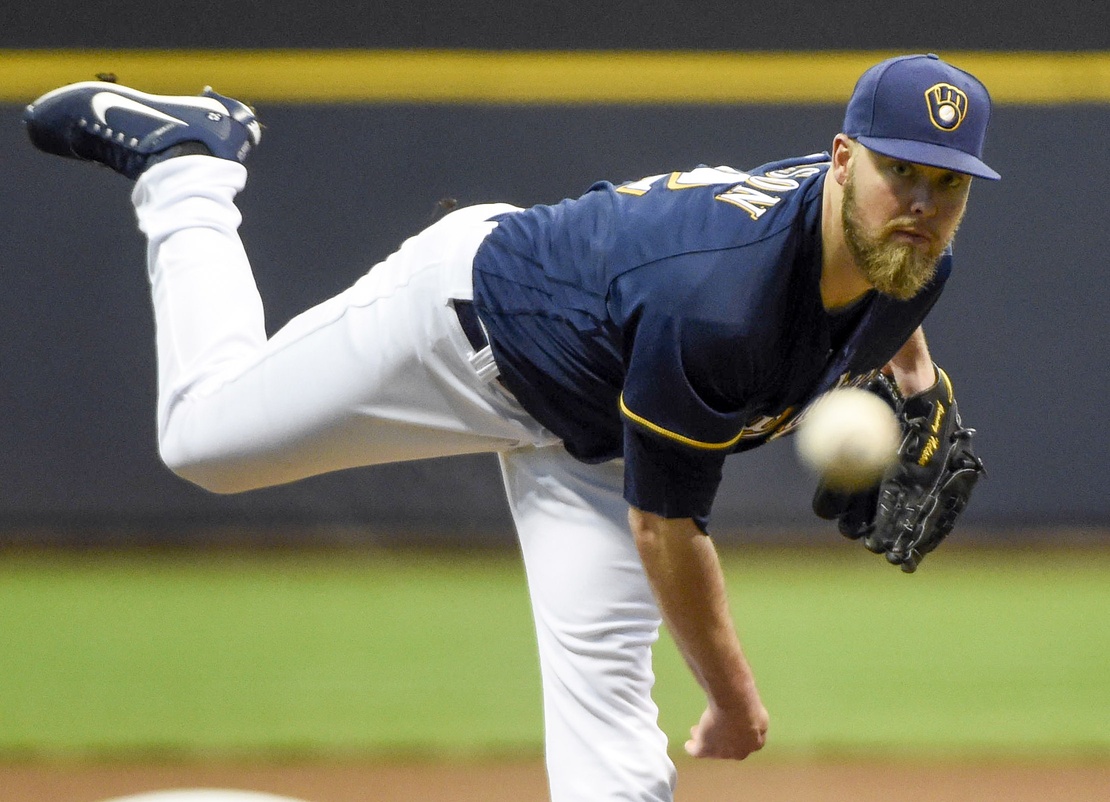The Milwaukee Brewers came into the 2017 season with a rotation full of guys they hoped could bridge the gap until starting pitching prospects such as Josh Hader, Luis Ortiz, and Brandon Woodruff make their way to the big leagues. It has not worked out as expected. Chase Anderson, who barely made the rotation in the first place, has been solid. Junior Guerra has only made three starts due to injury. Zach Davies can’t keep the ball in the yard, seemingly taking a large step back from his promising 2015-2016 seasons.
One of the brightest spots of the early-going has been the transformation of Jimmy Nelson into a useful starting pitcher rather than the middling back-end starter he has been so far in his four year career.
Nelson has struck out 22.6 percent of the hitters he has faced in 2017, good for 36th in the majors for starters with at least 40 innings pitched. This is the best mark of his career. He is doing so while lowering his walk rate at the same time. He has walked only 6.7 percent of the hitters he has faced. The righty ranks 31st in the league with 3.38 strikeouts for every walk he has given up.
Nelson is striking out more hitters and walking less by simply putting the ball in the strike zone more often than at any point in his career. He has been in the strike zone 57.3 percent of the time, 4.6 percentage points higher than his next highest single season total. At the same time, his zone contact rate has dropped to 81.5 percent after hovering around 86 percent through his first three full seasons. Nelson is getting hitters to swing and miss at a near-career high rate while throwing vastly more strikes than at any point in his career.
His ERA is at 3.83 despite a bloated .333 batting average on balls in play, a high number even for the Brewers’ sketchy early-season defense. His fielding independent pitching (FIP) is 3.46, which places him 27th in Major League Baseball, just behind Danny Duffy and Zack Grienke. His FIP puts him in ace territory.
Nelson is throwing his fastball more than his sinker for the first time in his career. He has thrown his fastball 35.6 percent of the time, after throwing it just 23.3 percent of the time prior to 2017. He is also throwing more off-speed pitches. He has firmly added a changeup to his repertoire. Nelson is only throwing it 4.5 percent of the time but it adds another dimension to his approach.
His results on both fastballs and sinkers have improved upon his career numbers. By backing off from his heavy usage of his sinker, hitters are left guessing whether the fastball or sinker is coming and thus both pitches have improved results. He has been extremely unlucky when he throws his slider. Batters haven’t hit a single home run off the pitch, but they are slugging .447 and running a .342 batting average due to a .394 BABIP. Historically his slider has been his go-to put-away pitch, unless Nelson has lost something on it, I’d expect the pitch to being the plus breaker of the past.
It remains to be seen if Jimmy Nelson can keep up his early season success. The Brewers might be wise to capitalize on his breakout by trading him if he keeps it up for another month. He enters arbitration after the 2017 season and has only three years left of control. A Nelson trade may depend on how Guerra comes back from injury and if Davies can recover from his early-season struggles. He is turning 28 this month. Although the Brewers are in first-place now, Nelson may be past his prime once the team fully completes this rebuild.
Jimmy Nelson’s underlying numbers suggest he is a different pitcher. Look for him to continue his modest success with his newfound love of the strike zone and a new pitch mix.
